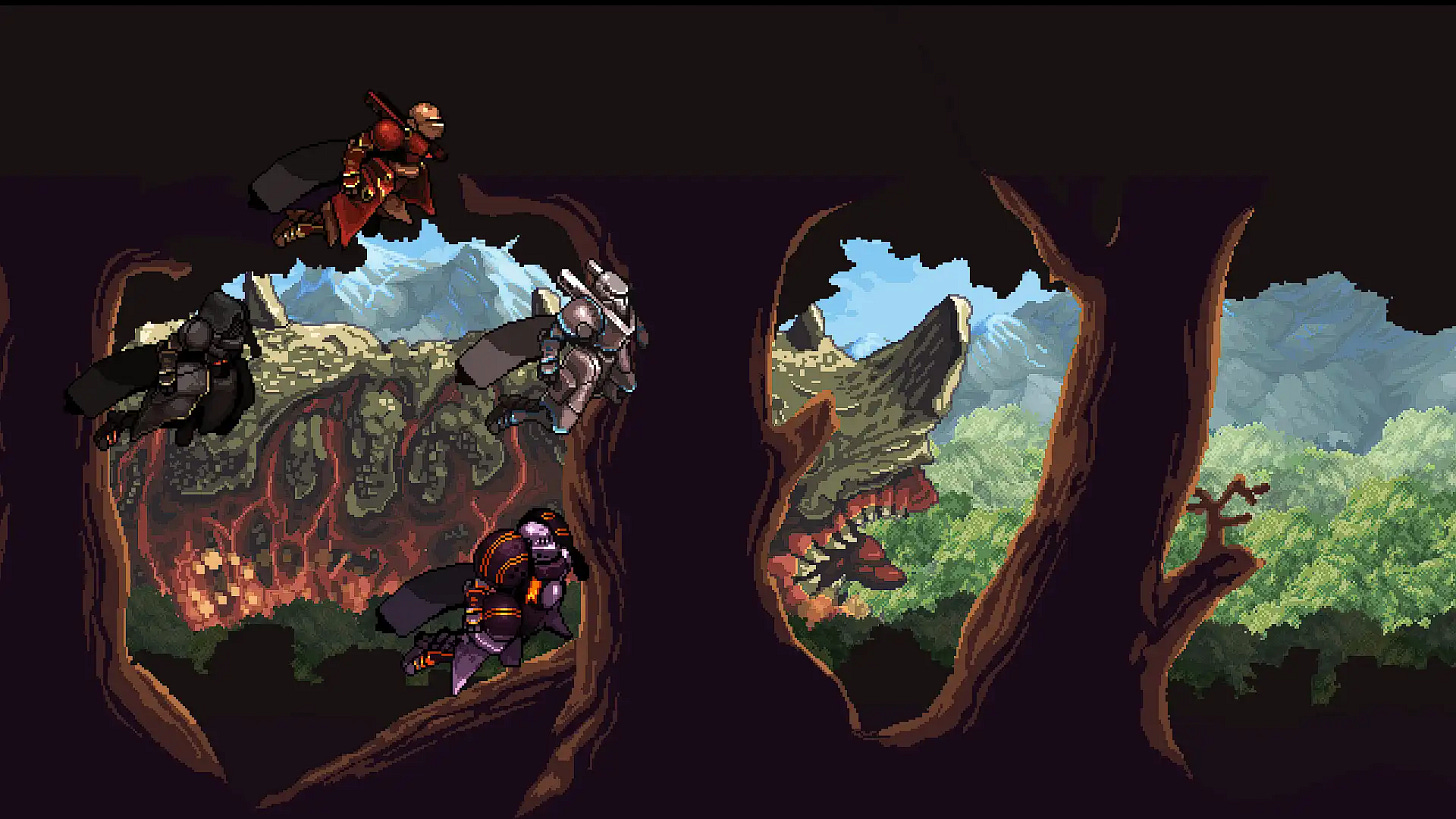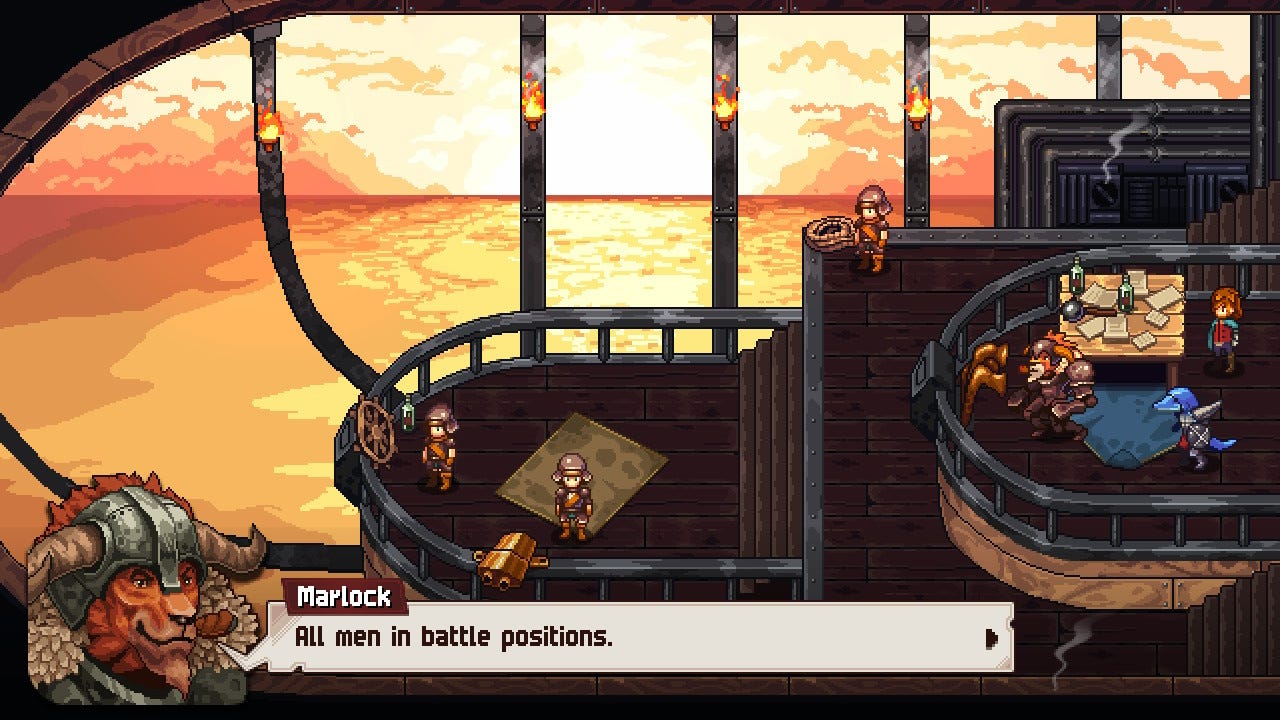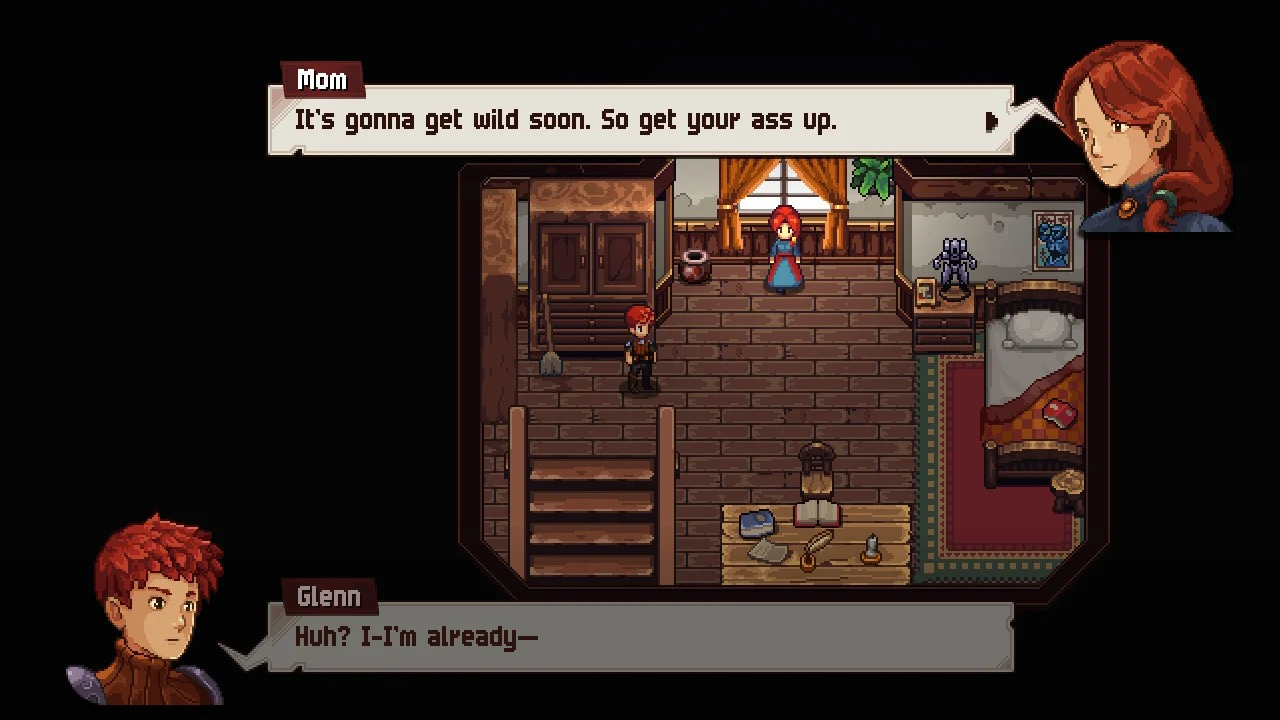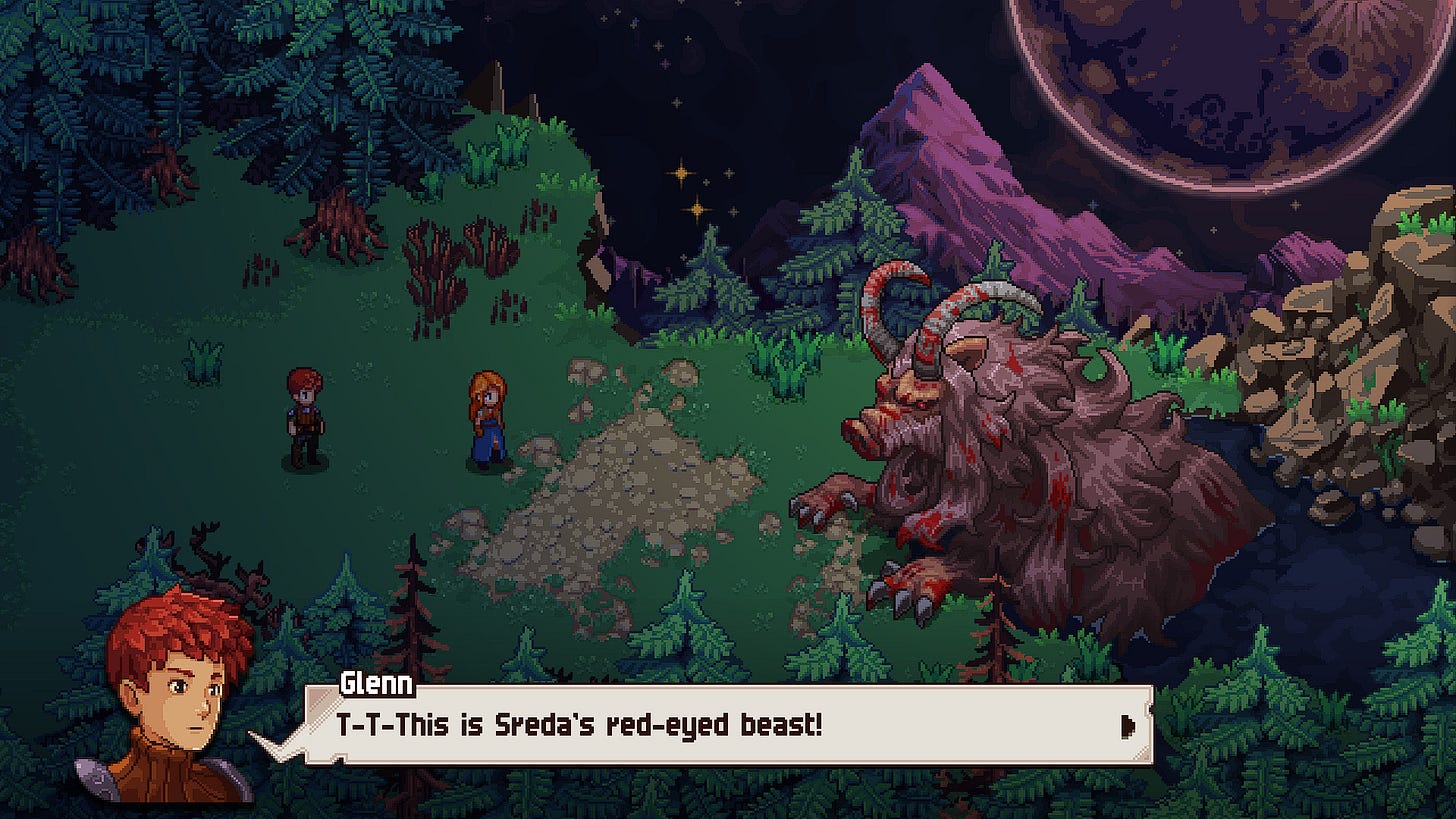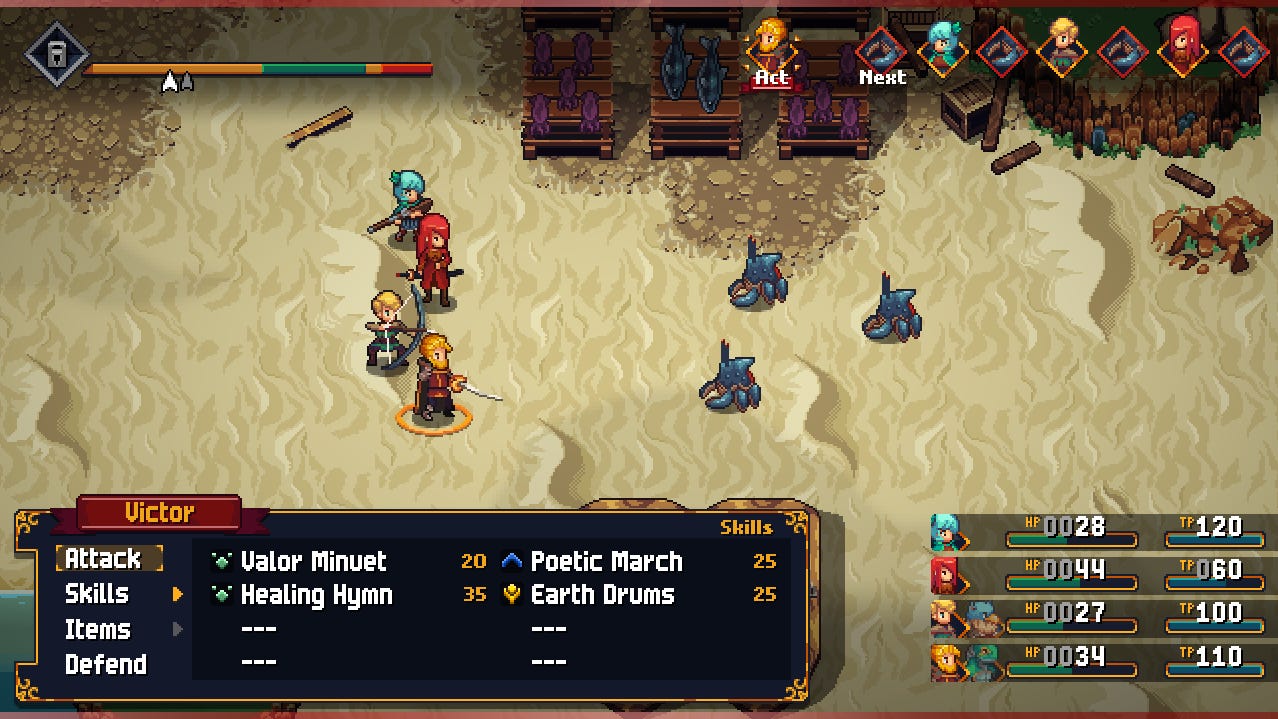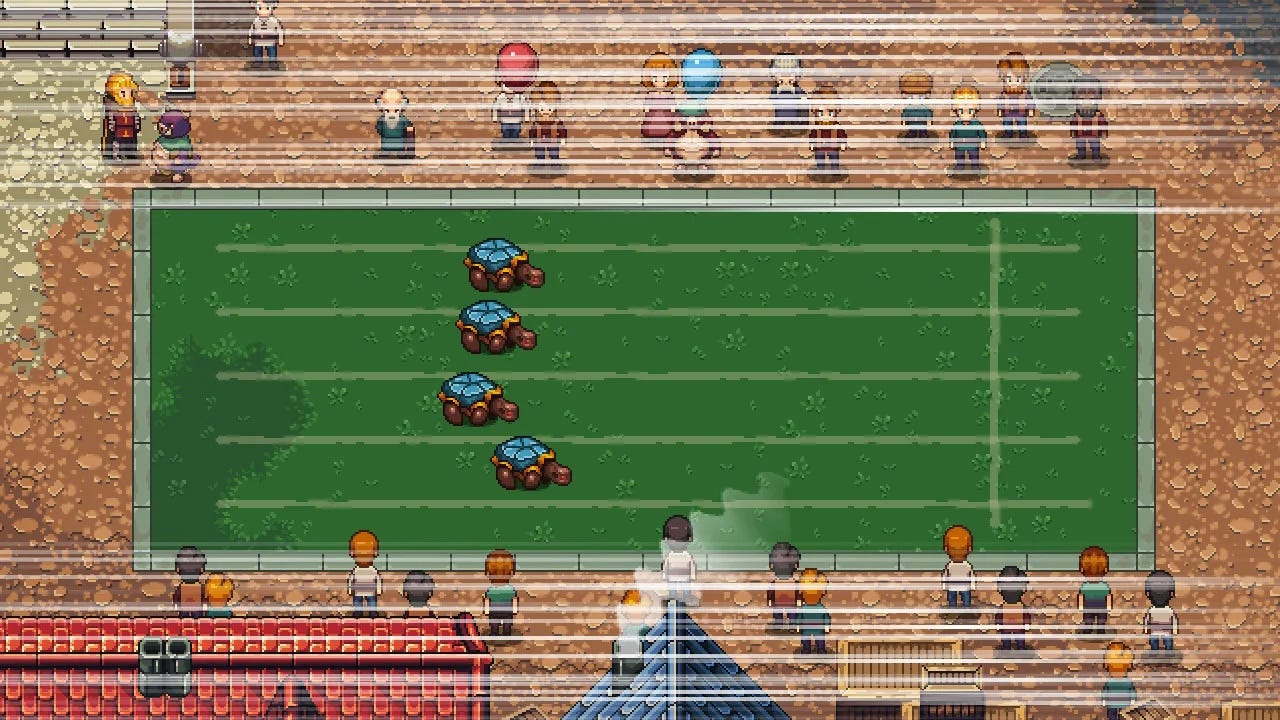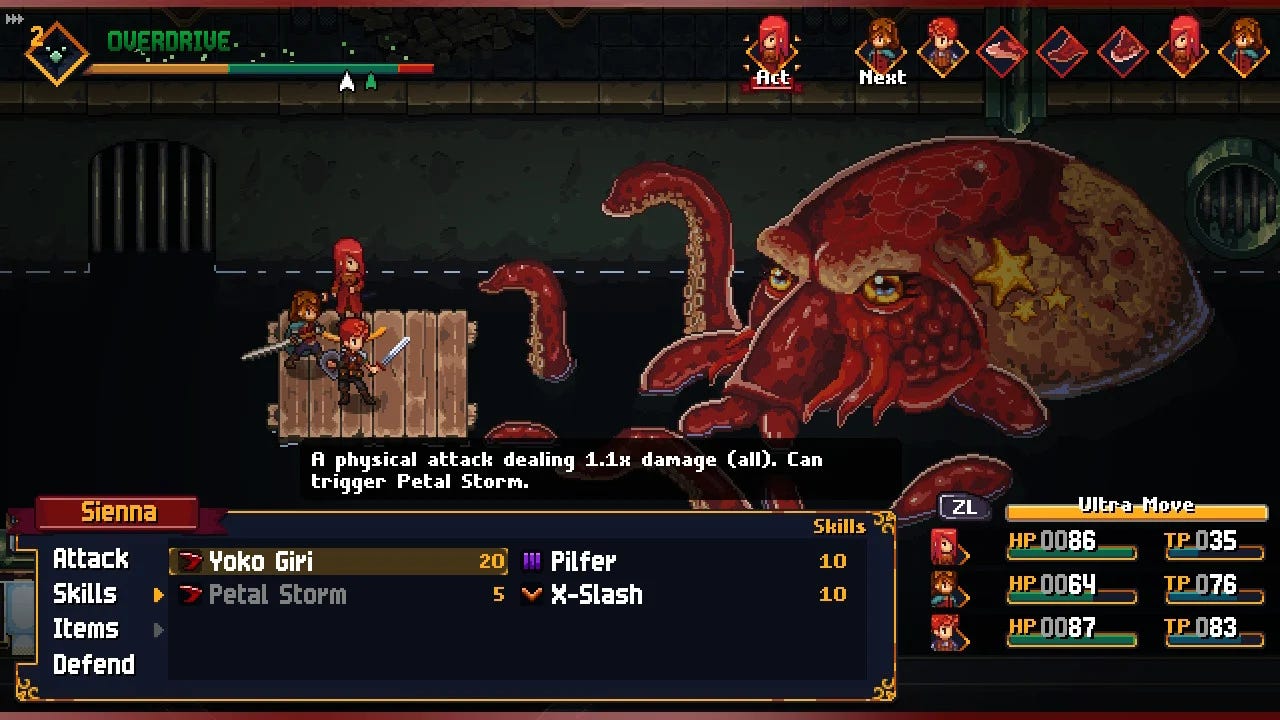Chained Echoes Review
The new gold standard for turn-based RPGs
It seems like every year there is at least one new game that blows me away. Keep in mind, this is not easy to do. I’ve played hundreds of games in my life, which means I’ve seen hundreds of gameplay mechanics, hundreds of plot lines, and hundreds of takes on the same few genres. Even so, there still seems to be at least one developer each year who comes out and surprises me for the better.
God of War, Spiderman, and Celeste were those games for me in 2018
Sekiro and The Outer Worlds were those games for me in 2019
The Last of Part II, Hades, and Final Fantasy 7 Remake were those games for me in 2020
It Takes Two and Psychonauts 2 were those games for me in 2021
Elden Ring and Tunic were those games for me in 2022
The games that I just listed all caught me off guard and exceeded my expectations. So much so that I’d consider all of them some of my favorite games of all time. I will look back at this list as a representation of the best of the best in gaming across the board, and a level of quality and creativity all developers should strive for in the future…except there’s one thing wrong with that list.
I didn’t realize until a few weeks ago, but I made a glaring omission. I had left off one of the best indie games…Dare I say…of all time, Chained Echoes. Chained Echoes is a game I tried on a whim. I saw a few people in my small gaming circle hyping it up on Twitter, it got good Metacritic reviews, and it was on Game Pass. It was the perfect storm for me to give this game a college try, and it was one of the best gaming decisions I have ever made.
This four-paragraph intro is here to drive home the fact that Chained Echoes, a game I almost skipped entirely, turned out to be one of the best indie games I’ve ever played, and quite possibly the best turn-based RPG I’ve played period. It takes decades of learning from classic RPGs and fixes almost every issue without fail. It does not comprise any single aspect of the game, and they are all treated with love and attention equally. And to make the story wilder, it was primarily developed by one person. For those who are fans of classic franchises like Golden Sun, Chrono Trigger, and Final Fantasy, hear me clearly: This is a must-play.
I know this article will be long, and that’s why I tried to craft the most convincing intro possible, but going forward, I will break down how Chained Echoes was able to deliver what I see as a masterpiece of a turn-based RPG experience.
When it comes to RPGs, it all begins with the story. What is the lore or the premise that will entice me to spend my next 20+ hours in the world? Is the story interesting enough to keep my attention all the way through? At first glance, I saw Chained Echoes as a pretty run-of-the-mill fantasy-medieval story. It’s set in a land where kingdoms have been warring for ages, and you follow characters that are smack dab in the middle of the conflict. It features a series of different fictional races, magic users, and what seemed like hundreds of made-up words meant to sell the idea that this is indeed a mythical place with a rich history. Cool. I’m not mad at i,t but I’m also not in love with it.
The hook, in the beginning, was the writing. Sure, I’ve been in this world a million times, whether it be in Game of Thrones or The Witcher, but there was a unique tone this time. The dialogue was delivered in one of my favorite flavors. The random NPCs would have funny or interesting tidbits to share instead of giving me a completely vanilla and useless line of text that I didn’t care about. The main characters spoke like real people who had real investments in whatever was going on at that moment. The “cutscenes” did a great job of visualizing all of the important moments instead of requiring me to fill them in on my own. Best of all, after I had spent 30 minutes completing the prologue, there was a cliffhanger that hooked me.
The game, in just 30 minutes, had given me the ultimate pitch on Chained Echoes. It showed how interesting the individual characters could be, it set the stakes for our main heroes, it showed off exciting set pieces, it demonstrated the different types of combat, and it gave me a reason to care about the story early. Flawless victory. The bar was set pretty high at the beginning of the game, but unbeknownst to me, the bar would get pushed higher and higher with each additional hour. The game is jam-packed with twists and turns, the characters all go through their own personal journeys, and the townsfolk you meet along the way can be both funny and tragic. By the end, you will feel you’ve witnessed multiple seasons of a TV show in the span of 30 or so hours. Even with such a grand and complex story, I felt like any question or doubt I had while processing information was always answered as if the game was reading my mind. And just to be clear, although it may seem like it, this is not a children’s story. There are really deep and dark plot points. If I had to compare it to something, I would say that it gave flashes of Fullmetal Alchemist: Brotherhood, which I consider one of the greatest animes of all time. I could drone on and on about how captivated I was by the world of Valandis and the centuries of history that shrouded it, but then we would be here forever. Just know you’re in for a fun ride from start to finish.
The story is great and all, but you might be saying, “This is a game, I can’t PLAY a story, how is the gameplay?” And to you I would say, first of all, relax, and second of all, the gameplay is magnificent. As I said at the top, Chained Echoes takes decades of learning from past RPGs and packs it into one game. First off, there’s no grinding; it’s basically impossible to grind. You make your characters strong by upgrading their weapons and equipment and unlocking and leveling up their special abilities. You can level up special abilities with what is equivalent to experience points, but the catch is that you get a minuscule amount from beating enemies. Most upgrade points will come from unlocking bonuses via world exploration and completing side quests. This mechanic was ingenious. It’s an easy way to reward for experiencing the content in the game. Sure, every piece of side content doesn’t result in a legendary weapon, but no matter what you do, there is almost always some sort of bonus that you’re working towards.
Some other great things it does are:
Heal your party after every single encounter
Let you run and regroup from every non-boss encounter without penalty
Allow you to easily sell any and all loot
Let you link a character to every starting party member that you can freely swap out during battle
Mark every available side quest (usually only a few at any given point) on the map
Allow for fast travel and inevitably lightning-fast “mount” travel that allows you to cover tons of area in seconds.
That’s just the tip of the iceberg. Almost every frustration of the typical RPG was removed. There were a few features that I felt were inconsequential like the crystal enhancement system and the intricacies of weapon upgrades, but I had essentially no complaints about the core gameplay loop. There wasn’t anything in this game that got in my way or slowed my progress down.
The combat itself felt more like a puzzle than a grind. New enemies were getting introduced the entire way through, and each one had a particular combat strategy that I needed to observe and counter. Most of the time, I found it wasn’t a matter of just overpowering the enemy, but rather using your team as efficiently as possible, given the enemy’s actions. You will cycle through status effects, buffs, debuffs, and straight damage to bring down tough foes. During this, you will be doing a calculated tango with an overdrive bar that dictates the amount of damage you dish out and receive. If you lose focus, you’ll spiral into a point of no recovery where your bar has gone deep in the red and your enemy is doing massive damage to you on every turn. On the opposite end, if you can safely manage the bar, many fights are just easy enough that you may want to bump the difficulty. I found normal to be perfect for me. Several boss fights were tough enough that I had to try multiple times, but it was never at a point where I felt like I was wasting time or getting frustrated with the game.
To dive a little deeper, this game features two combat systems. One is your traditional on-foot battle with your party members and your overdrive bar, and one is with versatile mechs called sky armor that require you to switch up your combat strategy. In this mode, you will still have to manage the overdrive bar, but you will also have to manage your gears because, apparently, these mechs are stick-shifts. While intimidating at first, the system is fairly simple to get comfortable with.
The bosses were the ultimate culmination of this design. Every boss encounter felt like I was in a game of chess. I needed to finish the fight as quickly as possible without overextending any of my party members and spiraling out of control. It was a refreshing feeling to know that every fight was possible to win with the right planning, without having to worry about whether I was under-leveled.
Outside of combat, there are still dozens of things to keep you stimulated. Hidden treasure, secret caves, secret boss fights, secret map locations, and rare chests are just a few an examples. All of these things come together to deliver an experience that feels like there’s no fat to it. There is no wasted time. Every fight feels necessary (if not, then you usually can run around them), every corner you explore has a secret to uncover, and every person you talk to has something funny or informative to say.
I’ve waxed poetic about this game for much longer than necessary, and I’m positive anyone who's reading this review gets the point. I loved this game, but I won’t wrap without talking about the art of Chained Echoes. Just like everything else, the visuals and music hit a bar that quite frankly nobody was asking it hit. They didn’t need to go this hard. Much of the game leaves nothing to the imagination. Every character, crucial to side quests or the main stor,y has their own custom artwork for dialogue that really sticks in your head as you see them evolve throughout the story. Every area has its own identity that not only helps with general navigation but also with making the world of Valandis feel diverse and vast. And within each area, there’s a swathe of uniquely designed enemies waiting to remind you of the challenges you fought through in that location.
Bringing everything together is a truly fantastic original soundtrack done by Eddie Marianukrok. Countless tracks will feel both nostalgic and classic by the end of your time with the game. There is a song for every situation. Levity, drama, action, shock, sadness, fear, and so much more can be conveyed at the drop of a hat, and regardless of the situation, the accompanying track hits hard.
Look, I’m going to beat a dead horse. This game is amazing. As I was starting this game for the first time, I had never once considered this could be one of my favorite indie games of all time, but here we are. As I have overstated, it excels in pretty much every category I can think of when judging if something is a good game. I’ll admit, it may not be for everyone. Some people might not like turn-based RPGs. Some people might not like medieval fantasy stories. Some people might not like games with a pixelated art style. Even with those beliefs, I think, given a fair shot, this game could still convert a fraction of those people. This game is a 10 in my book. It’s not perfect, but in the context of its genre, I think it’s nearly there. I would be extremely excited to play a modern turn-based RPG that is more streamlined and interesting than Chained Echoes, and at this moment, I’m not sure there is one.


